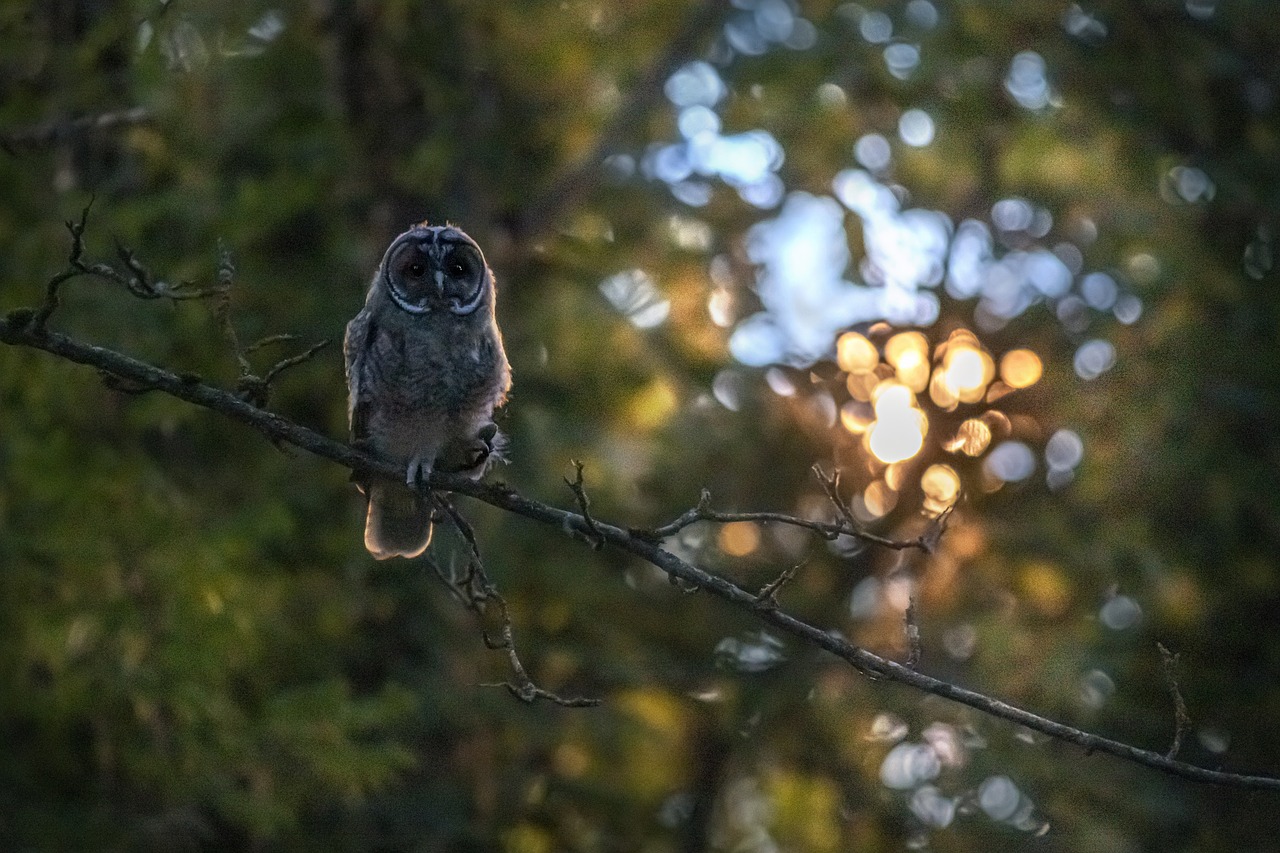The Long-eared Owl (Asio otus) is a distinctive and intriguing species of owl known for its prominent ear tufts and stealthy hunting habits. Here’s an overview of this fascinating bird:
Description
- Size:
- Length: About 33-40 centimeters (13-16 inches).
- Wingspan: Approximately 96-110 centimeters (38-43 inches).
- Weight: Ranges from 200 to 400 grams (7-14 ounces).
- Appearance:
- Plumage: The Long-eared Owl has a mottled brown and white plumage that provides excellent camouflage against the bark of trees. Its feathers are designed to blend in with the forest environment.
- Ear Tufts: One of its most notable features is the pair of prominent ear tufts (or “horns”) on top of its head. These tufts are not actual ears but are used for communication and camouflage.
- Eyes: Large, yellow eyes that provide exceptional night vision, crucial for hunting in low light.
- Beak: A small, hooked beak adapted for tearing flesh.
Habitat
- Distribution: The Long-eared Owl is found across Europe, Asia, and North America. Its range extends from the northern forests to more temperate regions.
- Preferred Environment: It favors dense, mixed or deciduous forests with a good undergrowth, as well as forest edges and open woodlands. It is also found in areas with ample roosting sites like dense coniferous stands.
Behavior and Ecology
- Feeding:
- Diet: The Long-eared Owl primarily preys on small mammals such as voles, mice, and shrews. It also feeds on insects and, occasionally, small birds.
- Hunting Style: It hunts primarily at dusk and during the night. Using its keen hearing and exceptional night vision, it silently patrols its hunting grounds for prey.
- Life Cycle:
- Breeding: Breeding season starts in early spring. The female usually lays 4-7 eggs in a nest that is often situated in a tree or on the ground, sometimes in abandoned nests of other birds.
- Incubation: The female incubates the eggs for about 28-32 days while the male provides food.
- Chicks: The chicks are altricial and require extensive care. They fledge (learn to fly) after about 6-8 weeks but continue to rely on their parents for food for some time.
- Life Span: In the wild, Long-eared Owls can live up to 10-15 years, though many do not reach this age due to predation and other factors.
- Behavior:
- Activity: The Long-eared Owl is primarily nocturnal. It is known for its silent flight, which helps it to stealthily hunt its prey.
- Calls: It has a variety of vocalizations used for communication, including a distinctive hooting call during the breeding season.
Conservation
- Status: The Long-eared Owl is generally classified as Least Concern by the International Union for Conservation of Nature (IUCN). However, local populations can be affected by habitat loss and changes in prey availability.
- Conservation Efforts: Protecting its forest habitat and maintaining healthy prey populations are important for its conservation. In areas where habitat loss is a concern, conservation efforts may focus on preserving and managing suitable forested areas.
Observing Long-eared Owls
- Best Times: Best observed during dusk and nighttime when they are active. Listening for their calls can also aid in locating them.
- Watching Tips: Look for them in dense, wooded areas with good cover. Their camouflaged plumage makes them difficult to spot, so careful observation and listening for vocalizations are key.
Interesting Facts
- Camouflage: Their plumage provides excellent camouflage, making them hard to spot during the day when they are roosting.
- Silent Flight: The Long-eared Owl’s wing feathers are adapted to muffle the sound of flight, allowing it to hunt silently.
Summary
The Long-eared Owl (Asio otus) is a remarkable nocturnal predator known for its distinctive ear tufts and effective camouflage. Found across a wide range of habitats, it plays a vital role in controlling small mammal populations. Its silent flight and stealthy hunting techniques make it a fascinating species for bird enthusiasts and researchers.
Visited 180 times, 29 visit(s) today
Views: 377
Subscribe to the newsletter:
